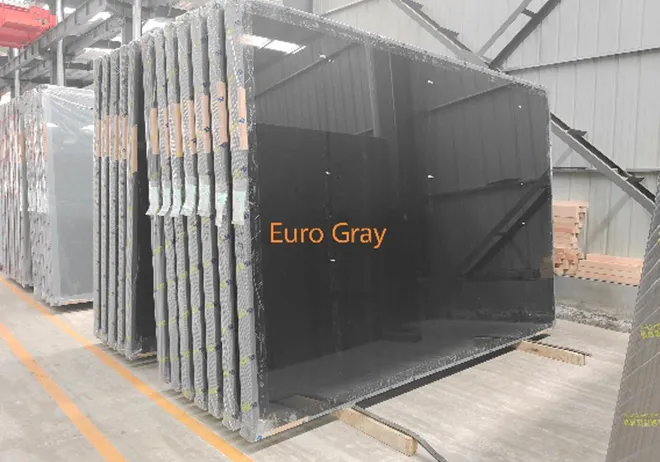10 月 . 21, 2024 17:45 Back to list
Trends and Factors Influencing Insulated Glass Pricing in Today's Market
Understanding Insulated Glass Prices Factors and Trends
Insulated glass, often referred to as double glazing or triple glazing, is a crucial component in modern construction, enhancing both energy efficiency and comfort in buildings. The growing emphasis on sustainability and energy conservation in recent years has resulted in a significant increase in demand for insulated glass products. However, fluctuations in prices can impact purchasing decisions for both homeowners and contractors. This article aims to explore the factors that influence insulated glass prices and current market trends that potential buyers should consider.
What is Insulated Glass?
Insulated glass consists of two or more panes of glass sealed together with a space in between, filled with gas such as argon or krypton. This design minimizes heat transfer, providing better insulation than single-pane windows. The benefits of insulated glass include improved energy efficiency, reduced condensation, and enhanced comfort levels within homes and offices.
Key Factors Influencing Insulated Glass Prices
1. Material Costs The primary cost components of insulated glass are the raw materials involved in its production, such as glass, gas fill, and spacers. Prices of these materials can fluctuate based on market demand, availability, and manufacturing costs. For instance, a surge in construction activity may elevate the cost of glass, leading to higher prices for insulated glass products.
2. Manufacturing Processes Different manufacturing techniques can affect the price of insulated glass. Advanced technologies, such as low-emissivity coatings (Low-E glass) that enhance energy efficiency, might come at a premium. Additionally, manufacturers that utilize automated processes may offer competitive pricing due to increased efficiency, but the investment in sophisticated machinery can also drive initial costs higher.
3. Size and Specifications The size and specifications of insulated glass units significantly influence pricing. Custom sizes, tints, or specific energy ratings can lead to added costs. Homeowners looking for unique designs or exceptional thermal performance will likely pay more for their insulated glass solutions.
4. Installation Costs The cost of insulated glass does not solely encompass the glass units themselves; installation is another critical factor. Professional installation may add to the overall expense, though it is often recommended to ensure optimal performance and longevity of the product.
insulated glass prices

5. Regional Variations Prices for insulated glass can vary significantly depending on geographical location. Factors such as local demand, supply chain efficiencies, and regional regulations related to building and energy codes can lead to price discrepancies. Urban areas with higher construction activities may experience higher prices compared to rural locations.
6. Energy Efficiency Ratings Insulated glass products are often rated for energy efficiency, with higher-rated units commanding premium prices. The U-factor, Solar Heat Gain Coefficient (SHGC), and Visible Transmittance (VT) are among the factors that inform these ratings. Buyers should consider the long-term savings associated with energy-efficient products, as they can significantly reduce heating and cooling costs over time.
Current Trends in the Insulated Glass Market
As of late 2023, the insulated glass market continues to evolve in several ways
- Sustainability Focus There is an increasing demand for eco-friendly building materials, including insulated glass. This trend has led to the development of products that not only provide excellent thermal performance but are also made from recycled materials.
- Smart Glass Technology Innovations in smart glass, which can adjust its opacity based on weather conditions or user preferences, are beginning to enter the market. Although often at a higher price point, these products can appeal to those looking for versatile and energy-efficient solutions.
- Post-Pandemic Construction Boom A resurgence in construction activity following the COVID-19 pandemic has led to a steady increase in demand for insulated glass. While this may contribute to higher prices in the short term, it signifies a positive outlook for the construction and manufacturing sectors.
In conclusion, while insulated glass prices can vary due to multiple factors ranging from raw material costs to installation expenses, understanding these variables enables consumers and contractors to make informed decisions. As trends lean towards increased energy efficiency and sustainability, the market is likely to continue adapting, presenting both opportunities and challenges. As buyers seek to balance quality with cost, staying informed about industry developments will be key to making the best choices for their projects.
-
Wired Glass: A Strong and Secure Glass Solution for Various Applications
NewsNov.04,2024
-
Tinted Glass: A Stylish and Functional Choice for Modern Homes
NewsNov.04,2024
-
The Elegance and Versatility of Silver Mirrors
NewsNov.04,2024
-
The Advantages of Copper Free Mirrors
NewsNov.04,2024
-
Tempered Glass: A Reliable Choice for Modern Applications
NewsNov.04,2024
-
Pattern Glass: Stylish and Functional Glass for Modern Design
NewsNov.04,2024
Related PRODUCTS














